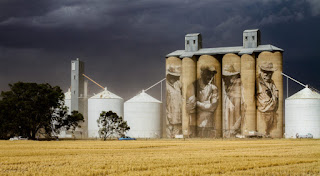It seemed a fitting end to our art tour to take in the Bendigo Gallery's Marimekko exhibition.
We both remembered and even owned some Marimekko designs in the 70's.
| I liked the combined prints |
| I remember the tent like shift! |
| Lots of geometric design |
| Wakasaka |
Katsuji Wakasaka textile designer, arrived from japan in 1968 and was every influential in the further trend of design
Marimekko is the Finnish textile and fashion company that achieved international fame in the 1960s and 70s with its bold screen prints and pop-art style graphics. The name means Mary's dress.Its iconic fabric patterns and unconventional ready-to-wear outfits brought colour and informality to an otherwise self-conscious fashion world. With more than 60 outfits, swathes of original fabrics, homewares, sketches and other archival materials, the exhibition focuses on the work of the talented individuals who defined this local textile practice and created its internationally recognisable designs.
| I had a laugh when i saw an article from Vogue Magazine titled By any name --still a sack! |
| Accessories as well as clothes |
Armi Ratia was founder of Marimekko and designer Maija Isola but 1979, Armi Ratia passed away - leaving the ship sailing without a captain. In 1985 the company was sold to Amer Group, a Finnish conglomerate.
But with nw designers and being a changing company they continue to operate as a unique design company









